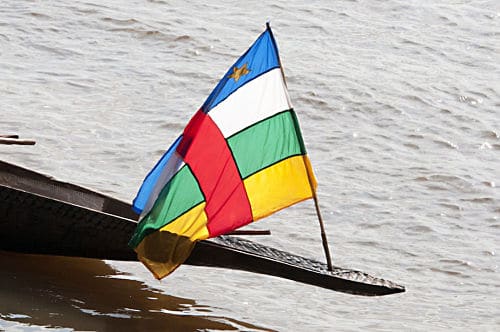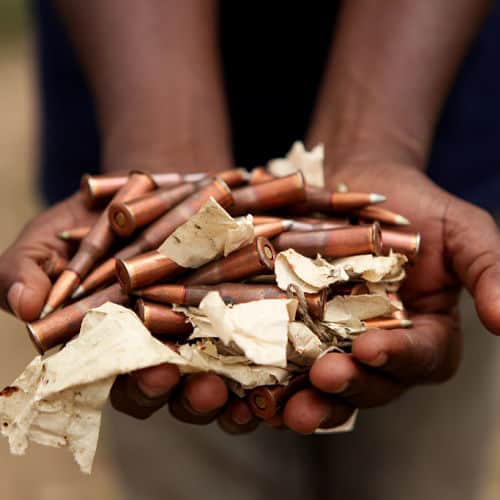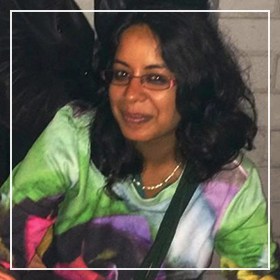In State of Rebellion: Violence and Intervention in the Central African Republic, Louisa Lombard moves away from an anthropological tendency to study the margins and interstices of the state (Das and Poole, 2004) by analysing the core actors and processes that uphold and flow from the state form (as Bierschenk and Olivier de Sardan (2014) called for in a volume discussed here), whilst doing so uniquely in a country widely considered as the “periphery of a periphery” (Cordell, 1985) (p.210). Despite the CAR’s extreme marginality, Lombard moves beyond popular tropes depicting it as a quintessential failed or collapsed state, an aberration in the international world order. Instead, she presents it is a ‘limiting case’ (Rutherford, 2003: 229) (p.2), marking one extreme end of the state spectrum that reveals dynamics inherent to all states. This critical focus on the state is Lombard’s analytical starting point in understanding the country’s “recursive” conflict over the last two decades which she interrogates through the question ‘what is “the state” in the CAR?’ (p.23).
 Commonplace understandings of the state follow the Weberian ideal type model (a claim to the monopoly on violence, the control of borders and a distinction between the public and private sphere) which decades of intervention have tried to instil in the CAR, as explored in the first two chapters. Despite this, “’the state never emerges” (p.80), and the CAR remains a privatized, non-territorialized state with multiple nodes of authority and authors of violence. All nevertheless remain beholden to the ideal-type state form, Central Africans, humanitarians, politicians, diplomats and rebels alike, “united by the primacy they assign the state as a form” (p.31) and each projecting their own desires, claims and assumptions onto this “phantom state” (p.61). As the gap between the state form and the reality (or absence) of governance on the ground grows and solidifies, an ‘as if’ state emerges to conceal this disjuncture and the “fictive” (p.133) nature of its ability to govern. In public, CAR and international politicians, diplomats, aid donors, rebels and humanitarian actors act and interact “as if” the state fulfils its (ideal type) role or “as if” it will soon finally emerge, rendering it into a “theatre-set ideal-type” (p.69), a space of political performance and open secrets reminiscent of the ‘make-believe’ state (Navaro-Yashin, 2007). Lombard shows how “the state is the placeholder ‘form’ that all have agreed upon”, monopolizing the category and practice of legitimate political organisation and precluding any alternative, genuine “political ‘content’” (p.65), ultimately contributing to the continuation and exacerbation of conflict.
Commonplace understandings of the state follow the Weberian ideal type model (a claim to the monopoly on violence, the control of borders and a distinction between the public and private sphere) which decades of intervention have tried to instil in the CAR, as explored in the first two chapters. Despite this, “’the state never emerges” (p.80), and the CAR remains a privatized, non-territorialized state with multiple nodes of authority and authors of violence. All nevertheless remain beholden to the ideal-type state form, Central Africans, humanitarians, politicians, diplomats and rebels alike, “united by the primacy they assign the state as a form” (p.31) and each projecting their own desires, claims and assumptions onto this “phantom state” (p.61). As the gap between the state form and the reality (or absence) of governance on the ground grows and solidifies, an ‘as if’ state emerges to conceal this disjuncture and the “fictive” (p.133) nature of its ability to govern. In public, CAR and international politicians, diplomats, aid donors, rebels and humanitarian actors act and interact “as if” the state fulfils its (ideal type) role or “as if” it will soon finally emerge, rendering it into a “theatre-set ideal-type” (p.69), a space of political performance and open secrets reminiscent of the ‘make-believe’ state (Navaro-Yashin, 2007). Lombard shows how “the state is the placeholder ‘form’ that all have agreed upon”, monopolizing the category and practice of legitimate political organisation and precluding any alternative, genuine “political ‘content’” (p.65), ultimately contributing to the continuation and exacerbation of conflict.
By exploring these dynamics, Lombard approaches conflict in the CAR as a Gluckman-esque ‘social situation’ writ-large (Gluckman, 1940), her aim is to understand conflict by examining the relationships between all the actors involved in the CAR and, crucially, “what gives form” to these relationships (p.40), the ideal state form.
The experiences of Central Africans are most keenly felt in chapters 2, 3 and 6 which explore the gulf between the ideal-type state form and the CAR state as it is by focusing on two of the former’s primary functions, its control of territory (chapter 3) and violence (chapter 6), which are absent here. Lombard unveils the complex historical and affective entanglements between mobility, violence and power in the CAR wherein violence is not a marker of a temporary, contemporary crisis but a practice that patterns the country’s last 150 years. Whilst ordinary Central Africans are subject to an “enclave politics” (p.89) of spatial policing and exclusion based on social status and religion, politicians, diplomats and humanitarians can move freely around and beyond the CAR. Its exclusionary and hierarchical deployment renders mobility into a visceral source of anger and desire. These anxieties are heightened by the extreme porousness of CAR, demonstrating a long-standing politics of elsewhere built through multiple iterations, starting with imperial relations with Muslim traders and the French and ending with the recent proliferation of humanitarian NGOs. By delving into this history, Lombard shows how the CAR is governed by an “outsourced sovereignty” and “pluralized authority” (p.110) where the most important decisions concerning its citizens, the choosing and deposing of presidents for instance, are taken abroad by non-Central Africans. This has culminated in a politics of “extraversion” (Bayart, 2000) though Lombard is careful to criticise the internal/external dichotomy underlying this concept, arguing that it makes little sense to define such actors as external given how central they are to the constitution of the CAR such that it cannot be spoken of “as a state except through reference” to those originally from elsewhere (p.110).
This political economy of extraversion is experienced as a source of danger, insecurity (including spiritual insecurity) and anti-social forces, producing widespread feelings of anger, shame and dispossession.
These fed a turn to autochtony and a vilification of a shifting “foreignness” (p.96)- currently ascribed to Muslim Central Africans – and were channelled into an explosion of violence in 2013 as the loosely organised Anti-Balaka movement mobilised in response to the destructive campaign of the Seleka rebel coalition that instigated a coup earlier that year. This violence emerged as a form of “threat management” which is embedded in the long-term social use and importance of violence in practices of “spectacular”, “popular punishment” (p.192) (brutal, ceremonial-like killings of thieves, witches and adulterers), forms of justice that demonstrate power and deterrence. Lombard argues that these pre-existing practices facilitated and escalated into this decade’s wartime violence, mediated by sentiments of dispossession and their effervescent potential, through which visceral, embodied dispossession is momentarily inflicted onto the body of the ‘other’. Within this, the state looms large: when not absent, it is experienced as predatory. For most Central Africans however, the state remains the focus of their “utopian dreams” (p.108) and desires, seen as the solution to all of their country’s problems and in particular their search for protection, security and distribution. Lombard astutely argues that these statist desires are “intensified rather than undermined by its continual failure to live up to them” (p.108) as people criticise the failure of “their state” (p.104) to live up to the idealised state form.
When this gap is lived and experienced, the state as fiction becomes state as fetish.
Chapters 4 and 5 explore how these state aspirations actually underlie rebellion in the CAR. Central Africans’ relationship to the ideal state and sense of personhood are deeply informed by a model of salaried-citizenship which is based on entitlements instead of rights. Concretely, all dream of one of the few state jobs and the status, dignity and salaried, “entitled personhood” these confer. From the dispossession that people find instead, recent forms of armed rebellion have emerged in order to seek new ways to “participate in the state” (p.132) and achieve entitlements, through peace-building initiatives with international organisations. Like rebels, the latter are also pulled into this relationship by the state form: lured by the threat posed by rebellion to the state not because of its violence, but because of its very capacity to reveal the state’s “fictive nature” (p.129) in the CAR. They are notably brought together in Disarmament, Demobilization and Reintegration (DDR) programmes which manifest a “converyor belt” (p.142) model of peace-building that blindly follows the ideal-type state, moving forward along a teleological path according to which rebellion is a temporary crisis of state weakness that will reach the ideal stable state through pre-determined tools and steps. Because of these assumptions which Lombard dismantles, the reality is a sclerotic process of “waithood” (p.171) where the slow-moving peacebuilding process returns to its starting point, perpetuating the recursivity of rebellion.

It is in this study of rebellion that Lombard’s argument about the state form and its centrality to conflict crystalises. Throughout State of Rebellion, the real ‘form’ of the CAR state emerges as an assemblage or network of relationships forming “multiple, overlapping”, “cross-cutting ties” (p.29) between a mulitplicity of actors internal and external to the CAR. Much like rebels and peacekeepers are united in DDR by their state aspirations, these actors are brought together, constituted, and their relationships mediated, by the ideal state form. They become entangled, collaborating and adapting to each other, often with unintended consequences as shown through the “conventionalization” (p.134) of rebel groups who adapt to the state framework in order to be considered legitimate partners for international interveners. They become armed rebels by virtue of being defined as such by their partners, their rebel identity and grievances growing and reifying in the process. The state form is also divisional as the gap between the state and its ideal translates into disconnections and distinctions between actors in the form of hierarchies in status, namely who is internal/external, assigning them different roles, privileges and access to knowledge. This produces a space of opacity, mistrust and suspicion which Lombard explores in the final chapter.
Within the gap of the state, action and imagination are severely constrained by their entanglement in these relationships and the state form, resulting in an empty “promisory politics” (p.97) devoid of all transformational capacity wherein rebellion persists as the only viable strategy Central Africans have to seek an entitled personhood and a politics of distribution.
State of Rebellion is a lesson in public scholarship. It stands apart from too much of anthropology by its striking clarity and lack of intellectual posturing or unnecessary abstractions. It is clearly written with political scientists, policy-makers and non-academic audiences in mind, and not anthropologists, as it gently opens up the discipline’s perspectives to outsiders and demonstrates what’s at stake in doing so. The flip side of this is a lack of sustained engagement with anthropological theory and ethnography. In particular, it is surprising how little Lombard engages with anthropological debates and literature on the state, the social theory of forms and the creation of difference (e.g.: Barth (1969) and Brubaker (2002)) which could have deepened her analysis and been enriched by such a unique case study. Although Lombard cautions the reader against interpreting her ethnographic method and evidence as anecdotal, the sweeping breadth of her study sometimes has this very effect as she jumps from one interlocutor or vignette to another, drawing from a range of contexts, ‘state actors’, regions and years. Whilst demonstrating the impressive extent of her research, this creates an ethnographic fragmentation that sacrifices ‘thickness’ and never allows enough space for voices, lives and characters to fully emerge.
In the final chapter, Lombard warns against the limits of knowledge in fully overcoming the situation in CAR, stating that “context is not like a fruit, ready to be plucked” (p.240).
This would have the effect of inverting context into a form, like that of the ideal state, contained, coherent and standardized (see Guyer, 2015). It is not a neutral truth ready to be consumed and shared by all who are instead enmeshed in their own interpretive frameworks and “pattern-divining” (p.228), constructing their own context(s) under the shadow of the state. This is no doubt true of Lombard too, and it is telling (and surprising) that she concludes, somewhat conservatively and against the grain of her analysis, that it is not the state form that is the problem, but its rigidity. Elsewhere Lombard acknowledges her (researcher) role as another ‘actor’ embedded in the CAR, and yet she crafts a symmetrical analysis that insightfully cuts across distinctions between the state form, content and context so that the state form itself becomes the context of conflict, whilst placing Central Africans and external actors, the state and its ideal, on a level analytic footing. It weaves together an ‘external’ birds-eye view of the relational CAR state with the ‘internal’ embedded perspective of its constituents, their experiences, understandings, intentions and constraints. This skillful shifting of scales is most apparent in the book’s ambitious premise: scaling up a ‘social situation’ like that of the Zulu bridge opening ceremony (Gluckman, 1940) onto the level of the state. The resulting insights make it of interest to scholars beyond anthropology and African studies, to those studying development, conflict and humanitarianism. In particular, it should be required reading for practitioners working in these sectors.
Works Cited
Barth, F. 1969. Ethnic Groups and Boundaries. The Social Organization of Culture Difference. Oslo: Universitetsforlaget
Bayart, J.-F. 2000. “Africa in the world: a history of extraversion”, African Affairs, 99(395): 217-67
Bierschenk, T and J.-P. Olivier de Sardan, eds. 2014. States at Work: Dynamics of African Bureaucracies. Leiden; Boston: Brill
Brubaker, R. 2002.” Ethnicity without Groups”, European Journal of Sociology, 43(02): 163- 189
Cordell, D. D. 1985. Dar al-Kuti and the Last Years of the Trans-Saharan Slave Trade. Madison, WI: University of Wisconsin Press
Das, V. and D. Poole. 2004. Anthropology in the Margins of the State. Sante Fe: School of American Research Press
Gluckman, M. (1940). “Analysis of a social situation in modern Zululand”, Bantu Studies, 14(1): 1-30.
Guyer, J. 2015. “Introduction to the question: is confusion a form?”, Social Dynamics, 41:(1): 1-16,
Navaro-Yashin, Y. 2007. “Make-believe papers, legal forms and the counterfeit: Affective interactions between documents and people in Britain and Cyprus”, Anthropological Theory, Vol 7(1): 79–98
Rutherford, D. 2003. Raiding the Land of the Foreigners: The Limits of the Nation on an Indonesian Frontier. Princeton, NJ: Princeton University Press.
Lombard, Louisa. 2016. State of Rebellion. Violence and Intervention in the Central African Republic. 304 pp. London: Zed Books. ISBN: 9781783608843
Featured image by United Nations Photos (flick, CC BY-ND-NC 2.0)



